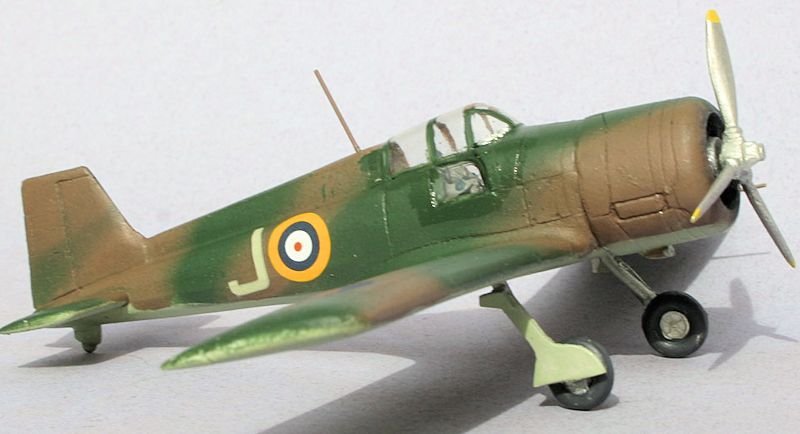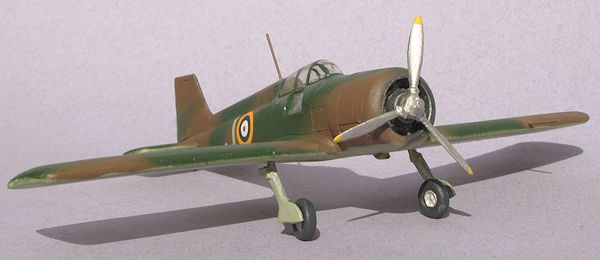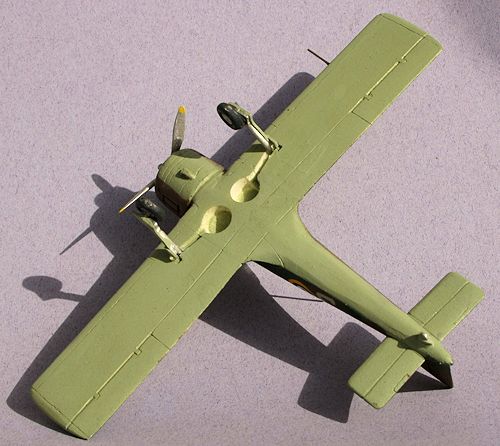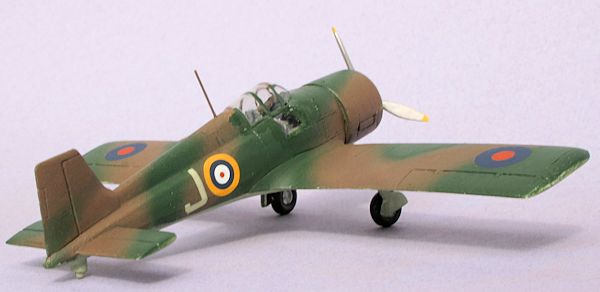
Magna Models 1/72 Vickers F5/34 Venom
| KIT #: | 7872 |
| PRICE: | $24.00 |
| DECALS: | No options |
| REVIEWER: | Peter Burstow |
| NOTES: | Short run resin and white metal kit |

| HISTORY |
 An
interesting British fighter prototype of the 1930's, the Vickers type 279 Venom
was built to specification F5/34. With an all metal stressed skin construction,
eight machine gun armament and a retractable undercarriage, it was of modern
design. It first flew on 17th June
1936, piloted by Joseph “Mutt” Summers. It was powered by the then experimental
Bristol Aquila.
An
interesting British fighter prototype of the 1930's, the Vickers type 279 Venom
was built to specification F5/34. With an all metal stressed skin construction,
eight machine gun armament and a retractable undercarriage, it was of modern
design. It first flew on 17th June
1936, piloted by Joseph “Mutt” Summers. It was powered by the then experimental
Bristol Aquila.
It was relegated
as an 'also ran' by the first flight, also by Captain Summers, of the Spitfire
prototype some three months earlier. No series production was made. The
prototype was scrapped in 1939 following a crash.
| THE KIT |
Another of Magna's British prototype
models, coming in their usual top opening box, there are nine resin parts, nine
white metal parts, vacformed canopy and side windows and a piece of wire. As
usual with Magna, there are spare transparencies su pplied.
As is also usual there are no decals.
pplied.
As is also usual there are no decals.
| CONSTRUCTION |

Joined up the fuselage, got a good match along the top and a small step under the tail. Filled the joint with superglue and sanded clean. Added the wings, cowling and tail surfaces, not a great fit, and had another fill and sand session.
| COLORS & MARKINGS |
 I wanted
to represent an operational aircraft, from 1939, when non-standard marking and
camouflage was common.
I wanted
to represent an operational aircraft, from 1939, when non-standard marking and
camouflage was common.
I made up a
scheme using flat earth and dark green topsides, in a non standard pattern, with
sky under-surfaces. Scrounged roundels and a code letter from the spares stash.
Then an overall spray of Testors Dullcote.
| CONCLUSIONS |
| REFERENCES |
http://en.wikipedia.org/wiki/Vickers_Venom
http://en.wikipedia.org/wiki/Bristol_Aquila
Peter Burstow
June 2013
If you would like your product reviewed fairly and fairly quickly, please contact the editor or see other details in the Note to Contributors.